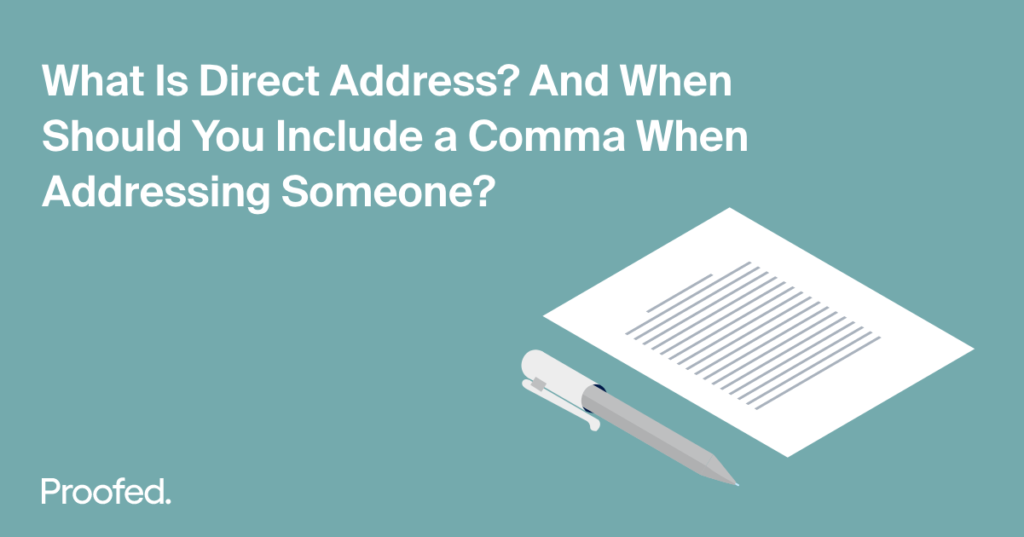When addressing someone directly in writing, you may need to set the person’s name apart with a comma (or a pair of commas). But why is this helpful? And where should you place the comma when addressing someone? Check out our guide to commas and direct address to find out.
What Is Direct Address?
Direct address – also known as the vocative case – refers to using a name or title to address a remark or question to a person directly (or when a character is addressing another character in written dialogue):
Are you listening, Tim?
I have your bill here, sir.
In these sentences, we’re addressing ‘Tim’ and ‘sir’. And, as you can see, we’ve used a comma to indicate direct address in both cases.
Sometimes, this extra punctuation is vital for clarity. We can see this if we use a different example (with and without a comma):
Let’s eat, Grandma!
Let’s eat Grandma!
The first sentence above includes a comma, so we know the speaker is addressing ‘Grandma’. Without the comma, though, ‘Grandma’ becomes the object of the verb ‘eat’ (i.e. the thing we’re going to eat). In other words, in the second sentence, the speaker is suggesting we eat Grandma.
In this case, then, a single comma separates inviting your grandmother to dinner and eating her for dinner. A big difference, we’re sure you’ll agree!
Where Does the Comma Go?
In all the examples of direct address above, we’ve put the name of the person being addressed at the end of the sentence, like in the following:
Here is the cake you ordered, Simon.
But direct address can occur anywhere in a sentence. And this may affect where you put the comma (or commas). The key in all cases, though, is that the name should be set apart from the rest of the sentence. For example:
John, can you hear me?
Find this useful?
Subscribe to our newsletter and get writing tips from our editors straight to your inbox.
You, Sarah, are a great dancer.
Setting the names apart like this ensures there is no room for confusion.
Common Greetings and Direct Address
The rules about direct address also apply to greetings. For example:
Hi, Susan! I’m writing to ask a favour…
Hello, Abram. Following up on our previous email…
Many people leave out the comma in less formal writing (e.g. an email to a friend), which is fine as long as your meaning is clear. But if you’re using a greeting in a formal or professional setting, make sure to include the comma!
The one exception to this rule is the word ‘Dear’ at the start of a letter or email. In this case, you should give the name directly after ‘Dear’, then use a comma afterwards and start your message on a new line. For example:
Dear Ms Roundtree,
In response to your letter dated 12 October 2020, we have…
‘Dear’ is traditionally the best option for a formal message, too.
Proofreading for Punctuation
Knowing when and how to use punctuation can be tricky. But, as this post has shown, correct punctuation can be essential for clarity in writing!
If you would like to be sure all your commas are in the right places, then, why not ask our proofreading team to check your work?



